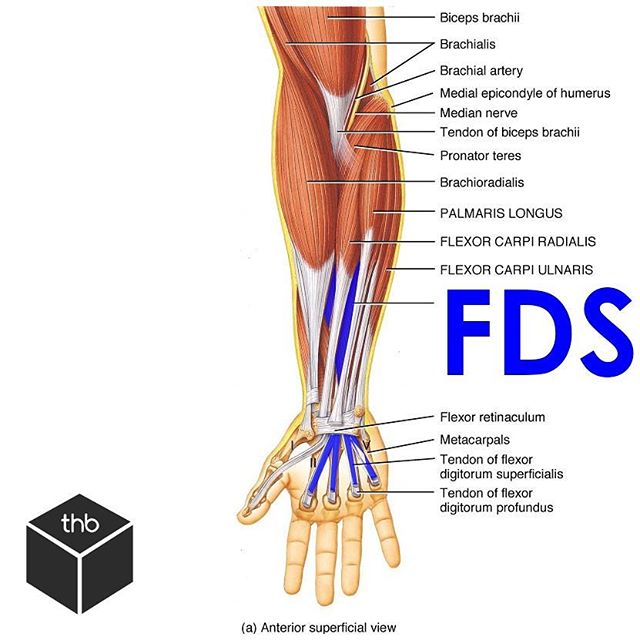1. Flexor tendonsThe flexor tendons in the fingers occur because the muscles of the forearms become tendons as they enter the carpel tunnel into the hand.As you can see from the first image we have a bunch of other muscles of the forearm that affect motion of the hand and wrist. Well ignore those for now! First up is the Flexor digitorum superficialis or FDS. Swipe ️ and see it visualized again with its interaction with its deeper counterpart. The Flexor digitorum profundus or FDP is the deeper muscle that extends to the finger tip and helps us with flexing the entire fingerFDS is a tendon that splits into a V to allow the deeper FDP to run between it right to the tip! It inserts into the middle phalanx and flexes primarily the PIP joint. The design of these two tendons contribute to why we have such fine motor control at our fingers but it&;d be a shame if these tendons didn&;t have anything strong to hold them down! Next up. Pulleys.

Posted in Instagram | Tagged: 39, anatomy, bodyweightfitness, bouldering, calisthenics, change, chiropractic, climbing, crossfit, education, fitness, forearm, function, injury, markham, medicine, mobility, movement, posture, pulley, rehab, rockclimbing, sprain, stability, strength, toronto, training 



 by
by 

Comments are closed.